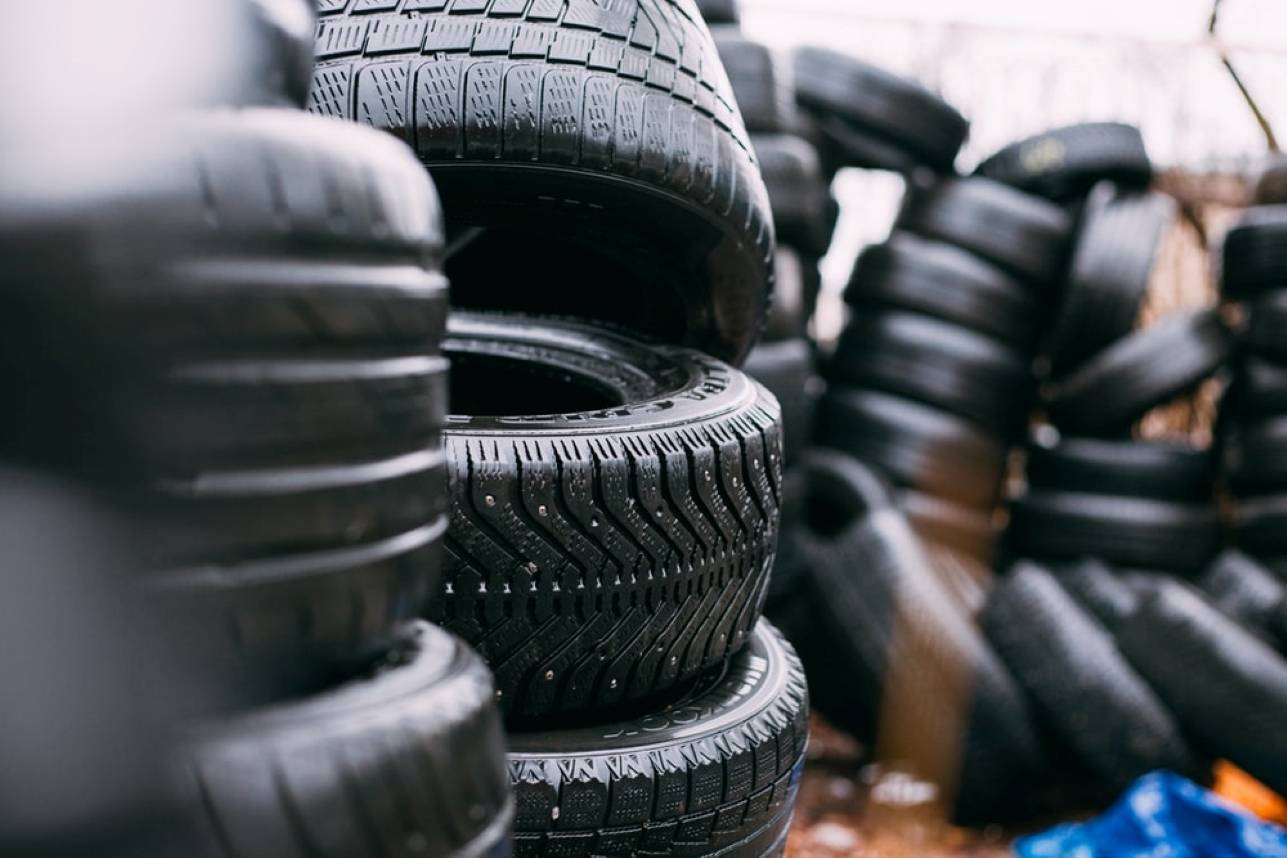WHEELS AND TIRES

TIRES
Tire wear bars, also known as tread wear indicator bars, are extremely important for checking the wear condition of your tires. They're one component in determining when you need new tires and if your current tires match the authorized tire tread depth criteria.
Tire Wear Bars
Tires are meant to sustain the vehicle's weight, absorb road shocks, transmit traction, torque, and braking forces to the pavement surface, and maintain and modify the car's direction of movement. Tires are comprised of tough rubber and filled with pressurized air to provide these four basic tasks.
The carcass covers and supports the vehicle weight by protecting the inner tube, which is filled with high-pressure air. Its strong rubber layer, which is bonded to the area of the tire that is in contact with the road, can withstand external damage or wear. Tire tread designs are chosen based on the needs of the vehicle's movement and stability. To ensure that tires are firmly fitted onto rims, a robust structure is required. As the demand for gentrified high-performance vehicles grows, a wider range of tires with more complicated features and performance is being produced.
Tire threads
Tire tread aids in the stability of your vehicle in wet situations, improves traction and handling, and improves cornering. You can find yourself spinning out of control if you don't have it! That is why it is critical to monitor the wear bars on your tires. It's time to replace your tires when the tread has worn down to the level of the wear bars. This indicates that you have exceeded the permitted tire tread depth restriction and your tires are no longer safe to use. Most tire manufacturers may advise you to replace your tires sooner rather than later in order to keep you safer on the road. Running your finger horizontally over tire wear bars becomes a way to assess the condition of your tread. When the wear bar rubs against your finger as uniformly as the tread, it's time for some new tires.
Coin test
It's quite simple. Take a coin and turn Lincoln's head upside down. Insert it into one of the tread grooves. If Lincoln's entire head is exposed, your tire has worn down to 1/16 of an inch or less and should be changed. If the top of his head is half covered, your tires may still have tread left. If you frequently travel in rainy circumstances because of where you live or work, it's a good reason to leave a little extra tread on your tires for safety. You will have to change your tires relatively frequently, but helping to avoid an accident is well worth it. In this scenario, instead of a penny, you can use a quarter to verify your tire level.
Another issue you may have is having tires with varying tread levels. This can be caused by failing to rotate your tires or by problems with your vehicle's alignment. Having various treads on your tires can make your vehicle difficult to control. After correcting any alignment concerns and promising to have your tires rotated on a regular basis, you should replace your tires to ensure that the uneven tread does not cause more problems.
TIRES DO AGE
Tire makers and technicians have different notions about when a tire is too worn out to be on road. However, six years is a decent age to start thinking about upgrading your tires. While tread can be a decent indicator of how well your tires are performing, there may be interior concerns that you cannot see with the naked eye that could jeopardize your safety. Wear and tear are determined by how you drive, the type of roads you drive on, the amount of pressure in your tires, how you stop, and how frequently you drive. Furthermore, if your tires have been repaired for leaks or punctured by nails or other sharp items, they will age faster. Tires that have "aged" might cause issues because the tread can split from the inside of the tire while driving or the tire can explode. These circumstances can result in the motorist losing control and creating an accident. Furthermore, many consumers acquire secondhand tires without understanding their age or condition. Because of their tires, drivers in these scenarios are more likely to be involved in an accident. If your tires are more than five years old, you should have them checked by a specialist to see if they are still safe to drive on. If you notice any of the following problems with your tires, it is critical that you address the issue as soon as possible. If you don't, you risk not only your personal safety, but also the safety of those on the road.
Find the auto parts, used parts and buy vehicles you need at Autotek.ae, the leading online marketplace for the automotive industry.
